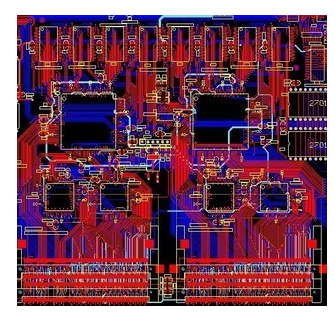(1) Challenges faced by electronic system design
With the large-scale increase in system design complexity and integration, electronic system designers are engaged in circuit design above 100MHZ, and the operating frequency of the bus has reached or exceeded 50MHZ, and some even exceeded 100MHZ. At present, about 50% of the designs have a clock frequency of more than 50MHz, and nearly 20% of the designs have a clock frequency of more than 120MHz.
When the system works at 50MHz, there will be transmission line effects and signal integrity problems; when the system clock reaches 120MHz, unless high-speed circuit design knowledge is used, PCBs designed based on traditional methods will not work. Therefore, high-speed PCB design technology has become a design method that electronic system designers must adopt. The controllability of the design process can only be achieved by using the design techniques of high-speed circuit designers.
(2) What is a high-speed circuit
It is generally believed that if the frequency of a digital logic circuit reaches or exceeds 45MHZ~50MHZ, and the circuit working above this frequency has taken up a certain share of the entire electronic system (for example, 1/3), it is called a high-speed circuit.

In fact, the harmonic frequency of the signal edge is higher than the frequency of the signal itself. It is the rising and falling edges of the signal (or signal jumps) that cause unexpected results in signal transmission. Therefore, it is generally agreed that if the line propagation delay is greater than 1/2 of the rise time of the digital signal driving end, such signals are considered to be high-speed signals and produce transmission line effects.
The transmission of the signal occurs at the instant when the signal state changes, such as the rise or fall time. The signal passes a fixed period of time from the driving end to the receiving end. If the transmission time is less than 1/2 of the rise or fall time, the reflected signal from the receiving end will reach the driving end before the signal changes state. Conversely, the reflected signal will reach the drive end after the signal changes state. If the reflected signal is strong, the superimposed waveform may change the logic state.
(3) Determination of high-speed signals
Above we have defined the preconditions for the occurrence of transmission line effects, but how do we know whether the line delay is greater than 1/2 the signal rise time of the drive end? Generally, the typical value of the signal rise time can be given in the device manual, and the signal propagation time is determined by the actual wiring length in the PCB design. Correspondence between signal rise time and allowable wiring length (delay).
The delay per unit inch on the PCB is 0.167ns. However, if there are many vias, many device pins, and many constraints set on the network cable, the delay will increase. Generally, the signal rise time of high-speed logic devices is about 0.2ns. If there are GaAs chips on the board, the maximum wiring length is 7.62mm.
Let Tr be the signal rise time and Tpd be the signal line propagation delay. If Tr≥4Tpd, the signal falls in a safe area. If 2Tpd≥Tr≥4Tpd, the signal falls in the uncertainty region. If Tr≤2Tpd, the signal falls in the problem area. For signals falling in uncertain areas and problem areas, high-speed PCB wiring methods should be used.